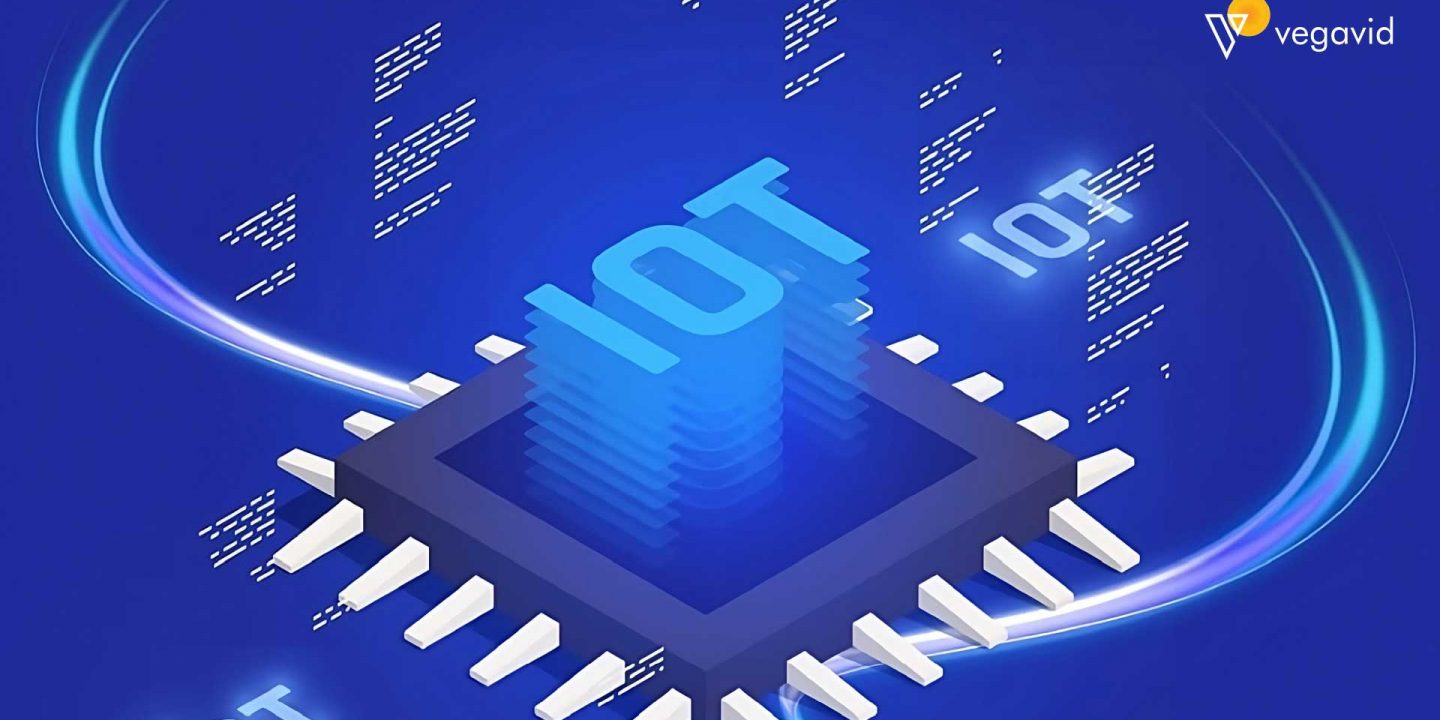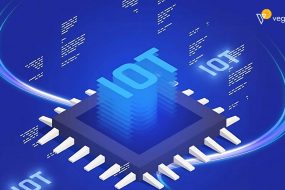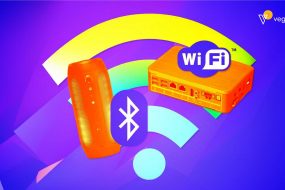
Internet of Things technologies are revolutionizing banking and finance by enabling smart applications powered by connected devices, sensors, and real-time data. IoT refers to the network of physical objects embedded with electronics, software, and connectivity to enable data collection and exchange. When applied to banking, IoT allows these “things” – from ATMs and bank branches to customer devices and assets – to generate data insights that improve processes, optimize operations and enhance customer experiences.
IoT devices and sensors offer new ways to improve fraud detection, automate tasks, tailor products and services, streamline trade finance, enhance security, and more. As more “things” become connected, even more opportunities will emerge for leveraging the vast amounts of data produced to reimagine banking work and customer experiences. However, realizing IoT potential will require addressing challenges around data security, privacy, governance, and managing the proliferation of connected devices and data.
What is the Internet of Things?
The Internet of Things (IoT) refers to the vast network of physical devices, vehicles, and everyday objects embedded with sensors, software, and other technologies that connect and exchange data with other devices and systems over the Internet.
IoT devices range from simple sensors that may transmit only a few bits of data at a time to more sophisticated devices with WiFi capabilities, processing power, and data storage. Examples include smartphones, appliances, wearable devices, industrial equipment, and medical devices.
By connecting these “things” to the Internet, IoT allows them to be controlled remotely and for data from multiple devices to be aggregated to provide insights and information. IoT enables devices to work together intelligently and coordinate actions without requiring human intervention. This allows for a more integrated digital environment that spans the physical and virtual worlds.
What are the Advantages of IoT for Banking and Finance?
The Internet of Things brings many benefits to banks and financial institutions by enabling new technologies, processes, and data sources that improve efficiency, security, and customer experience.
Improved customer view & personalized customer experience
One key benefit of IoT for banks is the improved customer view and personalized customer experience it enables. Leveraging data from customers’ connected devices gives banks richer insights into their customers’ financial needs and preferences.
IoT devices can provide information about customers’ lifestyles, spending habits, current assets, and upcoming plans. For example, smart home appliances may indicate a customer is renovating and may need a loan. Fitness trackers could show a customer is trying to live a healthier lifestyle and may need health insurance recommendations.
With these insights, banks can develop a more holistic view of each customer and their unique financial circumstances. They can then offer customized products, advice, and notifications based on customers’ actual needs and priorities.
The result is a more contextual and intuitive customer experience where banks anticipate customers’ next financial moves and proactively make relevant suggestions. Customers benefit from financial guidance that fits seamlessly into their digitally connected lives.
Automation
Automation is another important benefit that Internet of Things technologies bring to the banking sector. IoT devices, sensors, and data analytics capabilities. It enables banks to automate previously manual processes.
For example, physical security systems with IoT sensors can automatically detect and respond to threats with little to no human intervention. Wearable devices can authenticate users and authorize transactions seamlessly.
Inside bank branches and back offices, IoT sensors can monitor infrastructure issues, flag anomalies, and trigger responses to optimize operations. Tasks like report generation, data entry, and data reconciliation can be automated to reduce workloads for employees.
Automating routine processes through IoT allows banks to save on labor costs, improve reliability and consistency, and operate at higher speeds. Employees can instead focus on more valuable tasks like customer service and product innovation.
As IoT networks expand within banks, more opportunities for automating additional aspects of operations will emerge. Over time, IoT automation could transform core elements of how banks run – from fraud detection and risk management to investment management and trading.
Enhanced security
Enhanced security is one of the major benefits that Internet of Things technologies bring to the banking sector. IoT devices and sensors can help banks detect and prevent fraud, secure physical assets, and authenticate users.
For example, IoT-enabled security systems with sensors, cameras, and biometrics can automatically detect and respond to threats at bank branches in real-time. Wearable devices and smartphones can authenticate users and authorize transactions with a high level of accuracy.
IoT sensor data also enables more effective fraud detection and risk management. Transaction patterns and behaviors can be monitored for anomalies across multiple customer accounts and devices. This helps banks identify suspicious activity early and prevent fraud.
IoT tracking devices can be embedded in valuables like cash cassettes, safes, and ATMs to alert banks immediately if they are moved without authorization. This helps improve the security of physical assets. As the IoT network within banks expands, more opportunities will emerge to enhance security across digital channels, customer touchpoints, and banking infrastructure. For instance, IoT sensors could be embedded in staff badges to monitor and control access to restricted areas.
Fraud detection
Fraud detection is one area where the Internet of Things technologies can provide significant benefits for banks. IoT devices, sensors, and data capabilities make it possible to identify suspicious activities and transactions in real-time.
IoT sensor data from customers’ devices can be monitored for anomalies that may indicate fraudulent behaviors. For example, unusual login attempts from an unfamiliar location or device could flag a potential account takeover. Transaction patterns can also be tracked across multiple IoT-enabled devices and accounts. A sudden spike in high-value transactions or changes in regular spending habits may signal fraud in progress.
IoT data also allows banks to develop more sophisticated fraud detection algorithms. Large amounts of data from connected devices can be fed into machine learning models to identify subtle patterns that indicate fraud. These models constantly improve over time as they process more data.
Once fraudulent activities are identified, IoT sensors and devices can take immediate actions to mitigate risks. Accounts can be frozen, transaction approvals withheld, and anti-fraud teams notified in real-time.
One-touch payments
One-touch payments are fast, seamless transactions that require minimal or no input from the user. Internet of Things technologies is enabling this kind of frictionless payment experience for banking customers.
Connected devices like wearables, smartphones, and IoT-enabled vehicles can be linked to customers’ bank accounts and credit cards. With the right authentication and security measures in place, these devices can then make payments with just a tap, wave, or verbal command.
For example, a smartwatch could make payments at point-of-sale terminals or online simply by holding it near a reader. A vehicle infotainment system could allow drivers to verbally instruct the car to pay for gas or tolls. An IoT-enabled refrigerator could automatically re-order groceries when supplies run low.
One-touch payments through connected devices offer several benefits for customers. They save time by streamlining the payment process. They also improve convenience by allowing payments to be made effortlessly and on the go.
IoT Applications for Smarter Banking and Finance
Internet of Things technologies are powering innovative applications that are transforming banking and finance work to be smarter, faster, and more data-driven. IoT devices generate real-time insights that help to create-
Smart branch
Internet of Things technologies is transforming physical bank branches into “smart branches” with more personalized, automated, and secure services.
IoT sensors can monitor branch infrastructure for issues while providing data to optimize operations. Devices like beacons can provide customers with context-aware information and tips based on their location in the branch.
Self-service kiosks and ATMs equipped with biometrics, sensors, and AI capabilities enable more convenient and secure transactions. They reduce wait times and the need for tellers.
IoT-enabled queue management systems use sensors to detect customer wait times and direct customers to the next available staff. This improves efficiency and the customer experience.
ATMs
Internet of Things technologies is transforming ATMs into more intelligent, secure and convenient self-service machines. IoT sensors allow ATMs to monitor their own components for issues and trigger maintenance requests in real-time. This improves uptime and reduces downtime costs.
Biometric authentication like fingerprint scanning and facial recognition provides more secure access to ATM services. It reduces the risk of fraud. IoT-enabled video monitoring and reporting systems improve security by detecting abnormal behaviors and notifying banks immediately of potential threats.
Connected ATMs can also provide personalized services. Sensors can detect customers’ identities and preferences to offer tailored recommendations and targeted promotions.
Trade finance
Internet of Things technologies are transforming trade finance by improving visibility, automating processes, and reducing risks. IoT sensors embedded in shipping containers and cargo can monitor the condition, location, and security of goods in transit. This provides real-time visibility that reduces uncertainties.
Data from IoT sensors about goods, documents, and logistics can automatically trigger payments between banks and businesses involved in the trade. This streamlines and expedites processes. IoT-enabled tracking of goods and documents reduces the risk of fraud by verifying the authenticity and movement of physical assets underlying trade transactions.
As IoT networks expand within supply chains, more opportunities will emerge to automate paperwork and approve trades based on sensor data alone. This could speed up processes and lower costs.
Insurance
Internet of Things technologies are transforming the insurance sector by enabling usage-based policies, risk optimization, and proactive claims management. Sensor data from IoT devices allow insurers to offer pay-per-use policies where customers only pay for the amount of coverage they need. For example, insuring cars based on actual mileage driven.
IoT sensors embedded in assets help insurers identify risky behaviors and conditions in real-time. This allows risks to be addressed proactively before they lead to claims. In the event of claims, IoT devices can instantly detect incidents and transmit relevant data to insurers. This expedites the claims process.
Accounting and audit
Internet of Things technologies are transforming accounting and auditing processes in banks by automating data collection, validating transactions, and detecting anomalies in real time. IoT devices can also validate transactions by monitoring the physical movements of goods, assets, and documents underlying financial records. This helps detect discrepancies and ensure accuracy.
Real-time IoT data enables continuous auditing where processes are monitored constantly for anomalies or exceptions. Issues can be flagged and resolved quickly. As IoT networks expand, more opportunities will emerge for automating additional aspects of accounting and audit work like financial reporting, compliance, and risk management.
Conclusion
Internet of Things technologies offer immense potential to make banking and financial systems smarter through real-time data insights, automation, optimization, and enhanced security. From enabling one-touch payments and hyper-personalized customer experiences to improving fraud detection and trade finance processes, the applications of IoT span all areas of banking operations. As more devices become connected, even more opportunities will emerge for leveraging sensor data to transform banking work, products, and customer experiences.











